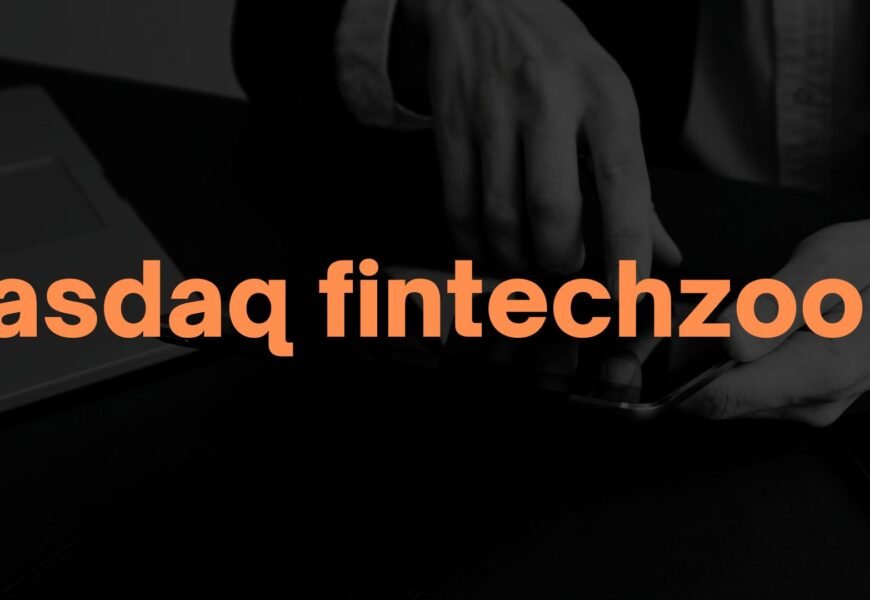Earnings season grabs headlines with spectacular beats and dramatic misses, yet most stocks do not complete their biggest moves until weeks later. Once the analyst call is over and the flash headlines fade, the market slips into a lower-volume lull that often masks the real re-pricing. This is where Nasdaq FintechZoom steps in, spotlighting insider trading patterns—executive buys, director sales, and large institutional block prints—that rarely make it into mainstream coverage. By marrying those filings to its sub-millisecond data fabric, the platform surfaces subtle accumulation or distribution trends that can power a well-timed “swing” trade long after Wall Street’s klieg lights have turned elsewhere. In short, Nasdaq FintechZoom helps traders look beyond the noise of earnings season toward the quieter but more telling cadence of corporate behavior.
Table of Contents
Seeing What Traditional Screens Ignore
Conventional brokerage dashboards revolve around price, volume, and chart patterns. While that trio remains essential, it leaves out one critical signal: how the company’s people position their money. Insider Form 4 filings published by the SEC reveal that information, but they drop in raw legalese—hardly trader-friendly. Nasdaq FintechZoom ingests every filing in real time, converts share counts into dollar values at the filing date’s weighted average price, and then streams the result directly into a customizable heat map. Instead of combing EDGAR at midnight, a user sees “$4.6 M CEO purchase at $17.12” scrolling across a tablet within seconds. Just as important, the platform plots past insider activity on the same price chart, letting traders compare today’s buy with earlier clusters. If the CFO scooped shares before the last three rallies, Nasdaq FintechZoom that pattern pops visually—no spreadsheet detective work required.
Parsing the Players: Officers, Directors, and Funds
All insiders are not created equal. A director’s dutiful participation in an option-grant program carries far less weight than a voluntary open-market purchase by a founder whose vesting period has expired. Nasdaq FintechZoom tags each trade with color-coded significance ratings derived from historical alpha studies: high-conviction clusters (multiple C-suite officers buying within seven days), option exercise followed by immediate hold, or “sleeper” fund sweeps executed through dark pools. The system’s quantitative backbone, built on five years of tick-level back-tests across 3,000 Nasdaq-listed equities, assigns probabilistic scores—e.g., “72 % odds of +4 % excess return in 20 trading days.” Because those calculations update tick-by-tick, swing traders glance at probability cones rather than slog through academic factor models. Nasdaq FintechZoom It turns what used to be an accountant’s footnote into a trade-ready signal.
Layering Sentiment and Alternative Data for Depth
Even insider actions must be weighed against the broader mood music of the market. Nasdaq FintechZoom overlays social-media sentiment (parsed from finance-Twitter, Reddit, and Weibo), options-market skew, and even 13F fund rotation flows onto the same insider-trade feed. A bullish CEO purchase loses punch if negative Twitter chatter and surging put-open-interest suggest trouble ahead. Conversely, a cash-strapped small cap can ignite when sentiment flips positive on the heels of a director’s courageous buy. By stitching those disparate alt-data rivers together, FintechZoom lets users contextualize insider trades within an ecosystem of crowd psychology and professional positioning. The old critique that “insiders sell for many reasons but buy for only one” still holds, but now traders can measure how the crowd digests Nasdaq FintechZoom that signal in real-time.
Crafting the Swing: Timing Windows, Targets, and Stops
Swing-trading insiders is as much art as science. Historical tests embedded inside Nasdaq FintechZoom suggest that the sweet spot lies between 5 and 30 trading days after a high-conviction insider cluster; shorter and the move may not have room to breathe, longer and the edge decays. The platform’s “Heat-Trigger” alert lets users set phased entries: buy one-third of the intended position when the stock closes 1 % above the insider-weighted average, another third if relative strength outperforms the peer group, and the final slice on a high-volume breakout. Profit-taking logic can also be automated: exit a third at 6 % gain, tighten a trailing stop under the 10-day moving average, and unload the rest if insider selling resumes. Nasdaq FintechZoom Because FintechZoom pipes directly into leading brokers, those conditions convert to executable orders in a single click, minimizing latency while emotions run high.

Guardrails: Managing False Positives and Event Risk
Not every insider buy translates into an upside. Options expirations, 10b5-1 plan sales, or statutory tax withholdings can create misleading noise. Nasdaq FintechZoom’s compliance filters flag trades tied to automatic plans or vesting schedules, stripping them out of “high-signal” watchlists. The platform also pushes SEC halt notices, earnings-date reminders, and FDA-approval calendars next to insider dashboards so traders do not wander into binary-event land blindfolded. Risk can be further dampened with built-in synthetic hedges—FintechZoom suggests optimal put spreads or inverse ETF correlations calibrated to the user’s portfolio beta. Nasdaq FintechZoom The same technology that accelerates conviction also erects speed bumps against hubris.
Real-World Example: The Semiconductor Surprise
Consider a mid-cap chipmaker that beat earnings but offered cautious forward guidance, sending the stock sideways for two weeks. During that lull, Nasdaq FintechZoom flagged three Form 4 filings: the CTO, CFO, and a longstanding board member each bought roughly $1 M of shares at prices 8 % below the post-earnings high. Sentiment scanners showed a drastic drop in negative Reddit threads, while options data recorded falling implied volatility. A swing trader who followed the combined signals could have entered near $54, set a stop at $50, and targeted the pre-earnings gap around $61. The rally materialized within 18 sessions, netting nearly 13 % before the first insider filed a partial sale—an exit cue the platform delivered instantly. Nasdaq FintechZoom The episode encapsulates why insiders plus context can trump headline-driven trades that exhaust themselves within hours.
Where the Platform Is Headed
Nasdaq’s roadmap hints at integrating blockchain-secured insider filings from foreign exchanges, giving traders unified coverage of multinational ADRs. Machine-generated summary blurbs—think “TL;DR for Form 4s”—are rolling out in beta, compressing legal jargon into two-sentence takeaways. A natural-language chat assistant powered by FintechZoom’s API will soon let users ask, “Show me mid-cap biotech names with clustered C-suite buys and rising call-put ratios.” Nasdaq FintechZoom The platform then generates a ranked watchlist in seconds. By 2026, expect predictive Monte Carlo simulations that blend insider purchase size, historical drift curves, and macro tailwinds to forecast probability bands directly on price charts. Each upgrade shrinks the gap between information and insight, empowering traders who once relied on gut feel to make data-driven swing decisions.

Five Frequently Asked Questions About Nasdaq FintechZoom Insider Signals
1. How fast does Nasdaq FintechZoom publish insider trades compared to public sources?
FintechZoom parses SEC Form 4 filings within roughly 30 seconds of the document’s electronic timestamp—hours faster than many free portals that Nasdaq FintechZoom scrape filings in batches. That immediacy can be crucial when timing a swing entry on thinly traded names.
2. Does the platform distinguish between automatic 10b5-1 plan transactions and discretionary insider buys?
Yes. Each insider event is tagged “Programmatic” or “Open-Market.” Only discretionary purchases receive full signal weighting in FintechZoom’s Nasdaq FintechZoom probability models; scheduled plan trades are down-weighted or filtered out entirely, depending on user preference.
3. Can retail traders access the same insider analytics that institutions see?
Absolutely. While hedge funds may integrate the data via high-bandwidth APIs, the core probability scores, historical back-tests, and heat maps are Nasdaq FintechZoom identical on the standard desktop and mobile tiers available to individuals.
4. What asset classes beyond equities feature insider tracking?
The current focus is Nasdaq-listed common stocks and ETFs. Still, pilot coverage now includes insider token allocations on Nasdaq’s Digital Asset Venue and, Nasdaq FintechZoom later this year, selected corporate bond executive trades filed under Rule 144A.
5. How should traders integrate insider signals with other technical indicators?
FintechZoom’s research suggests treating insider data as a primary catalyst and using technical tools—moving averages, VWAP, RSI—as timing confirmers. Nasdaq FintechZoom A high-conviction insider cluster plus bullish RSI divergence historically produces the most robust swing setups.
Final Takeaway
Earnings season may set the initial tone, but the real narrative unfolds in the shadows where insiders quietly put skin in the game. Nasdaq FintechZoom shines a light on those moves, converting arcane filings into actionable swing signals and wrapping them inside a latency-optimized, context-rich dashboard. For traders looking beyond the hype cycle, insider signals offer a disciplined edge—one rooted not in rumor or sentiment Nasdaq FintechZoom alone but in the tangible confidence (or caution) of the people who arguably know the company best.
















